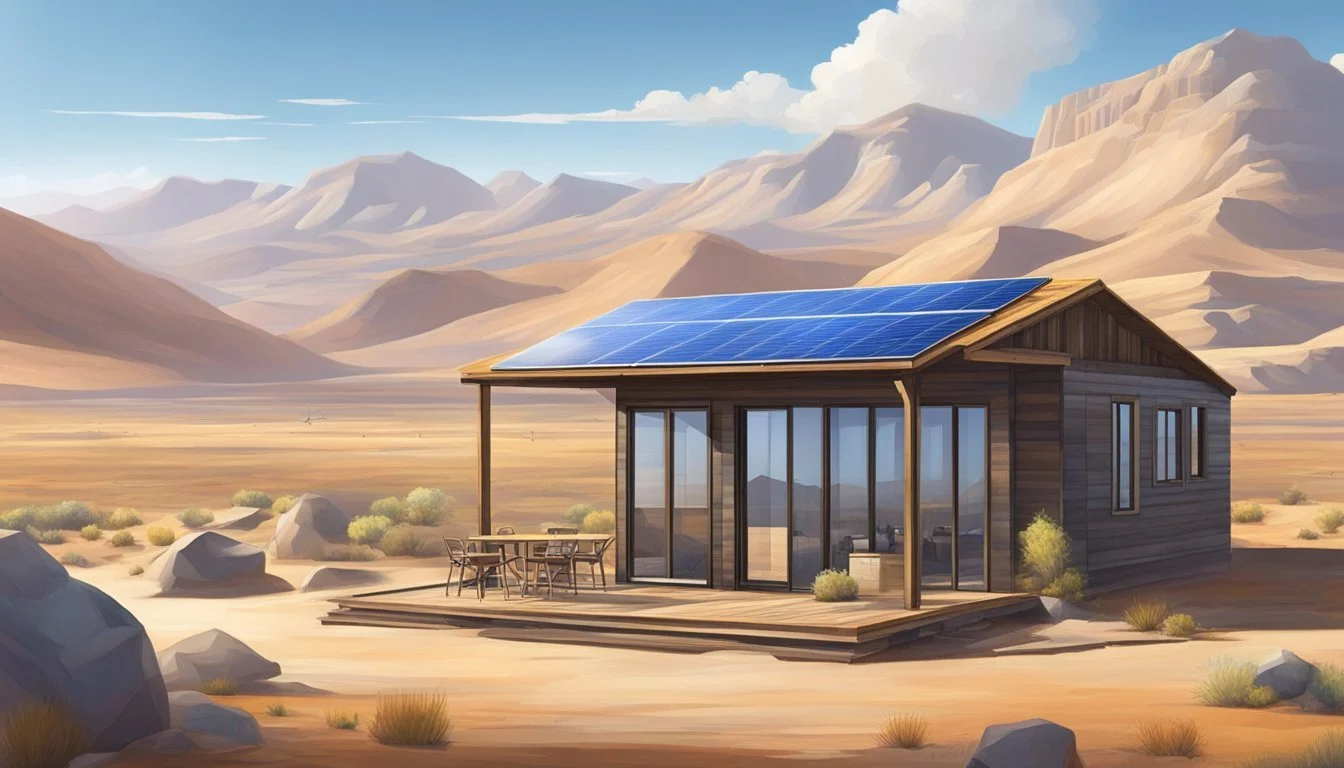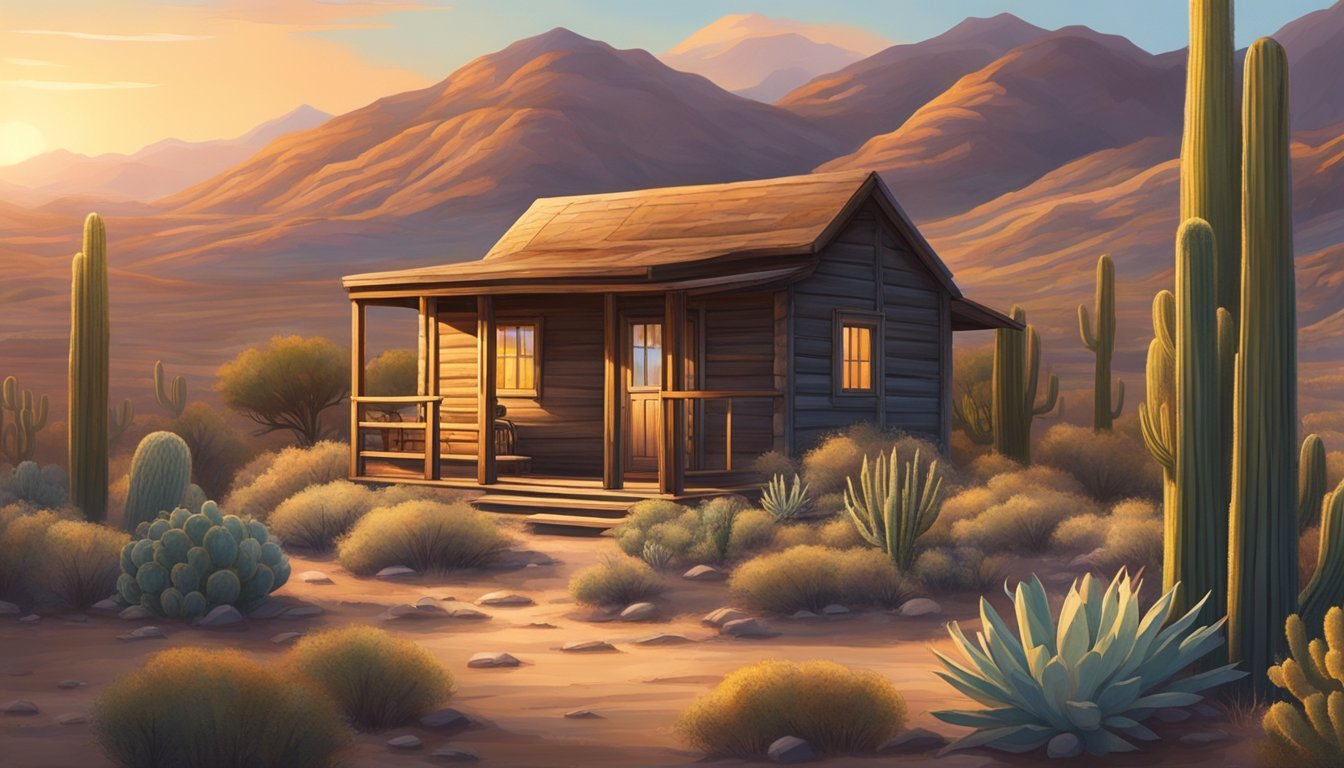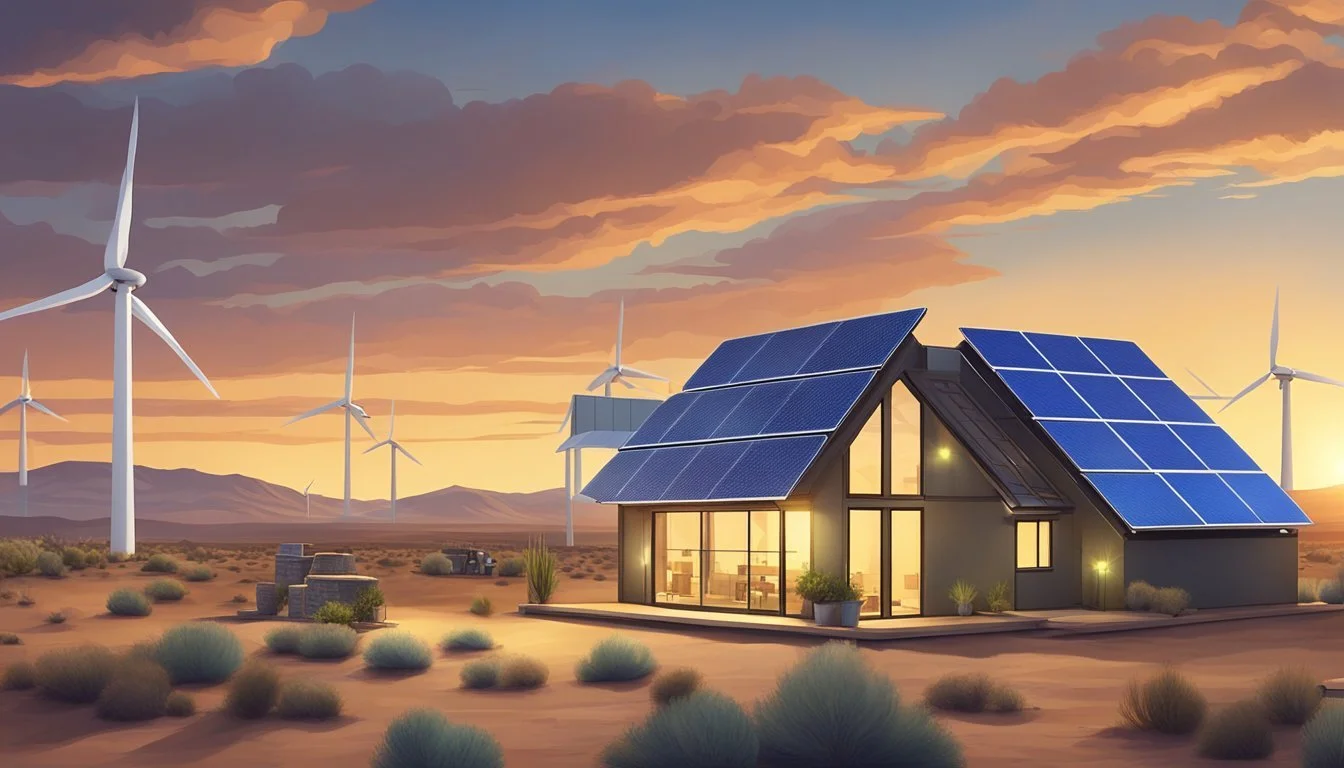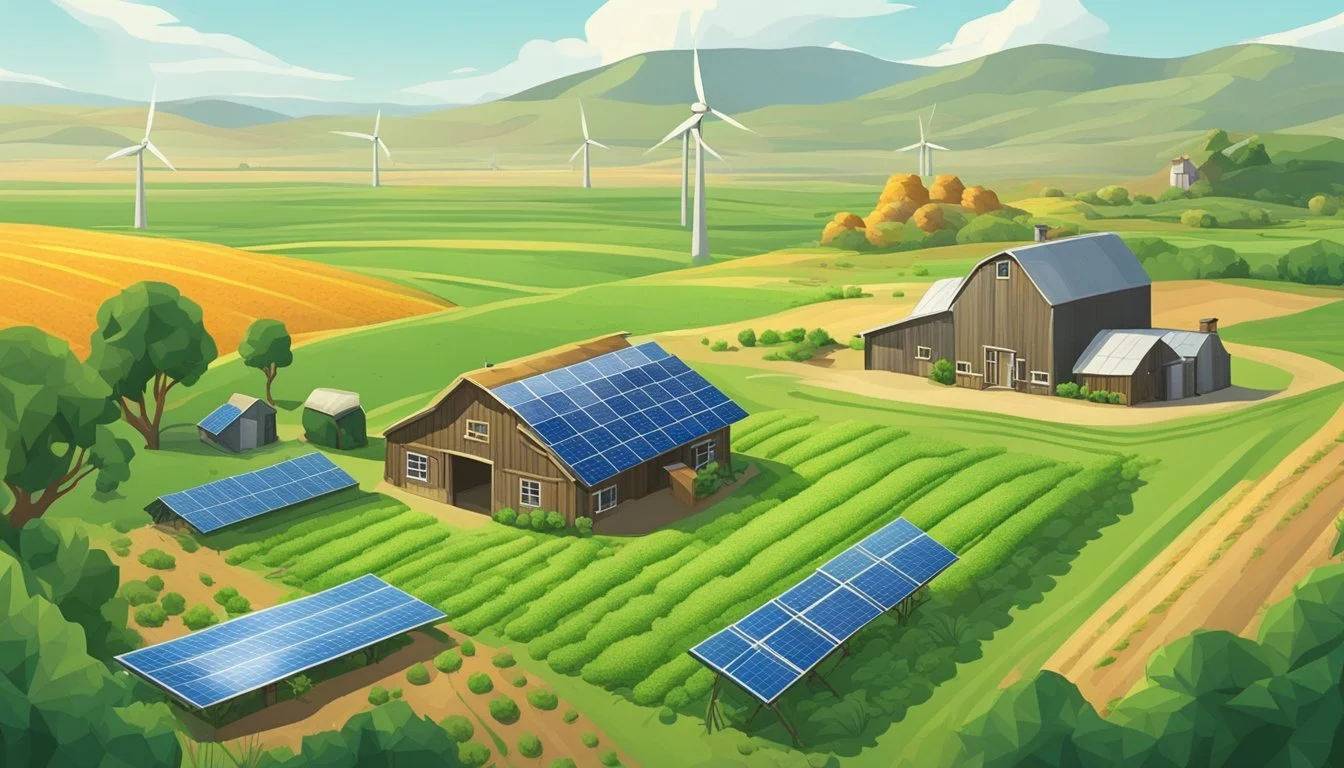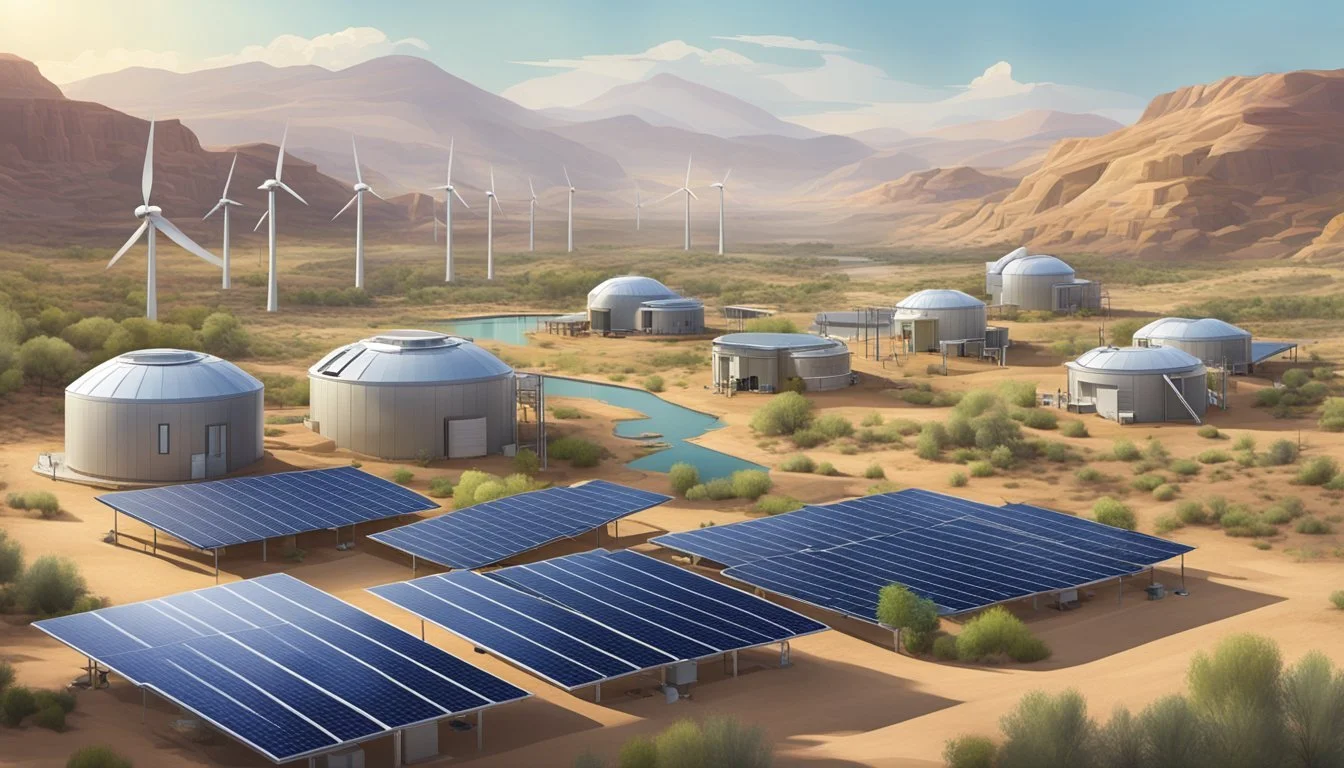High Desert Off Grid Living
Sustainable Tips and Strategies
Choosing to live off grid in the high desert presents a unique and rewarding lifestyle choice for those seeking independence from traditional utilities. This type of living requires a self-sufficient approach to generate power, manage water, and handle waste effectively. Solar panels, wind turbines, and generators play a crucial role in creating a sustainable living environment in these arid regions.
Successful off-grid living in the high desert hinges on smart resource management and adaptability. Finding high-quality, affordable desert land is a key first step. Practical solutions such as rainwater harvesting systems or drilling wells are essential for a reliable water supply, while septic systems can ensure proper waste management.
Adventurers who choose this path can enjoy the freedom and serenity that comes with such a lifestyle. Yet, they must be prepared for the unique challenges that arise from living in a harsh, remote environment. Balancing these elements can lead to a fulfilling, autonomous way of life far from the constraints of urban living.
Choosing the Right Location
Selecting an optimal location for high desert off-grid living involves assessing the climate and environment as well as understanding land legalities and zoning requirements.
Assessing Climate and Environment
In high desert regions such as Arizona, California, and the US deserts like the Sonoran, Mojave, Great Basin, and Chihuahuan deserts, the climate is a critical factor to consider.
These areas experience extreme temperatures and low precipitation. Potential residents must evaluate natural water sources such as springs, wells, and employ rainwater harvesting techniques to ensure a sustainable water supply.
Look for regions with favorable solar exposure to maximize energy generation through solar panels. Additionally, the local flora and fauna can affect the feasibility of growing food and should be thoroughly researched.
Land Legalities and Zoning
Understanding the legal aspects of land ownership and usage is crucial when choosing a location for off-grid living. Different states and regions, including high desert areas in Arizona, California, and other US deserts, have varying regulations on land use.
Prospective homesteaders should check zoning laws to ensure the land is designated for residential use and off-grid developments. Water rights and access can vary significantly and must be confirmed to avoid future disputes or legal issues.
Ensure all necessary permits are obtained before starting construction to comply with local building codes and environmental regulations. Careful consideration of these legal factors will help in establishing a sustainable and lawful off-grid homestead.
Water Management
Effective water management is crucial for a sustainable off-grid lifestyle in the high desert. Key strategies include securing sustainable water sources, rainwater collection and storage, and water harvesting techniques to ensure a reliable supply.
Securing Sustainable Water Sources
Identifying and securing sustainable water sources is the first step in effective water management. Wells and natural springs are common choices.
Wells: Drilling a well provides a continuous and reliable water source. It's essential to consult with a well drilling expert to determine the appropriate depth and water yield for your needs.
Natural Springs: If available, tapping into natural springs can be an efficient way to obtain fresh water. It may involve less infrastructure and maintenance compared to wells.
Surveying the land for potential water sources before settling is crucial. Consider the availability of groundwater and proximity to any natural springs. An initial investment in proper infrastructure ensures a long-term, sustainable water supply.
Rainwater Collection and Storage
Rainwater collection is a practical solution to supplement water needs in the high desert.
Collection Systems: Install gutters and downspouts to direct rainwater from roofs into storage tanks. Materials should be non-toxic and capable of withstanding desert weather conditions.
Storage Tanks: Use durable tanks designed to minimize evaporation and contamination. Plastic, metal, and fiberglass tanks are common. Ensure tanks are large enough to store sufficient water for dry periods.
Regular maintenance of the collection and storage systems is essential. Clean gutters and tanks periodically to prevent debris buildup and ensure water quality. Having multiple smaller tanks instead of one large tank can also help manage usage efficiently.
Water Harvesting Techniques
Implementing effective water harvesting techniques maximizes the usability of every drop.
Drip Irrigation: This method delivers water directly to plant roots, reducing water wastage. It's ideal for gardening and agriculture in the desert.
Mulching: Using organic or inorganic mulch around plants helps retain soil moisture, reducing the amount of water needed for irrigation.
Greywater Systems: Recycling water from sinks, showers, and laundry for irrigation purposes conserves fresh water. Ensure the greywater is suitable for your plants and comply with any local regulations.
Combining these water harvesting techniques creates a robust system for addressing water scarcity. Utilizing multiple methods ensures flexibility and resilience in managing water resources.
Energy Solutions
Living off-grid in high desert areas requires effective and sustainable energy solutions. The following methods focus on implementing solar and wind energy to meet electricity needs while being eco-friendly and efficient.
Solar Energy Implementation
Solar energy is a highly reliable source for off-grid living, particularly in high desert regions where sunlight is abundant. Solar panels are used to convert sunlight into electricity, which can then be stored in batteries. These systems are becoming more affordable and accessible.
Installing solar panels involves determining the right size and number based on energy needs. This calculation must consider daily electricity consumption and the typical sunlight available. High-quality panels and efficient battery storage can ensure a consistent power supply.
In addition to traditional panels, solar energy storage systems using lithium batteries are popular due to their durability and efficiency. They allow for energy storage during peak sunlight and usage during periods of low solar activity, such as nighttime or cloudy days.
Wind Energy and Alternatives
Wind energy serves as a complementary power source in high desert regions. Wind turbines capture wind energy to generate electricity. This solution is especially useful during times when solar energy production may be low, like nighttime.
Portable wind turbines are particularly beneficial for their flexibility and ease of installation. They can be positioned to capture the most wind and can be relocated as needed depending on seasonal wind patterns. For larger systems, a combination of small and medium-sized turbines often works best.
In addition to wind turbines, generators can serve as backup solutions. They provide immediate power during prolonged periods of insufficient solar or wind energy. Using biodiesel generators ensures sustainability by utilizing renewable fuel sources.
Implementing both solar and wind energy solutions, complemented by backup generators, ensures a reliable and sustainable energy supply for off-grid living in high desert environments. This multi-faceted approach addresses fluctuations in weather and energy demands, allowing for continuous power availability.
Food and Farming
Living off-grid in the high desert necessitates strategic planning for food and farming due to the challenging climate. Key areas include establishing a productive desert garden and focusing on drought-resistant agriculture techniques.
Establishing a Desert Garden
Creating a desert garden involves selecting the right crops and ensuring adequate soil preparation. Vegetables like tomatoes, peppers, and zucchinis can thrive with proper care. Herbs and spices such as basil, thyme, and rosemary are well-suited for arid conditions.
Soil health is crucial. Adding compost improves soil structure and provides necessary nutrients. Drip irrigation systems help conserve water while ensuring plants receive adequate moisture. Mulching with organic materials reduces water evaporation and maintains soil temperature.
Drought-Resistant Agriculture
Focusing on drought-resistant agriculture ensures sustainable farming in arid conditions. Varieties like drought-resistant vegetables, including certain tomatoes and beans, are essential. Fruit trees like pomegranates, figs, and certain grapes can also be successful.
Utilizing water-saving techniques like rainwater harvesting and greywater recycling is vital. Implementing geothermal greenhouses helps maintain consistent temperatures and protects crops from extreme weather. Selecting drought-tolerant crops supports resilient food production in the desert climate.
Building and Infrastructure
Effective building and infrastructure in high desert off-grid living require careful consideration of materials, climate-appropriate construction methods, and efficient waste management systems. These elements are crucial to creating a sustainable and comfortable homestead.
Selecting Suitable Building Materials
Selecting the right building materials is essential for durability and energy efficiency. In desert climates, materials like rammed earth, adobe, and insulated concrete forms are effective. These materials offer excellent thermal mass, helping to maintain internal temperatures and reduce the need for active heating and cooling.
Using high-quality insulation is critical. Insulating materials such as rigid foam, spray foam, and reflective barriers can significantly improve energy efficiency. Metal roofing with reflective coatings can also mitigate heat absorption, keeping indoor temperatures cooler.
Additionally, incorporating passive solar design principles can enhance natural heating and cooling. This involves positioning the building to maximize natural light and heat during the winter and provide shade during the summer.
Constructing for Climate
Constructing for a high desert climate involves specific design strategies to address temperature extremes and low humidity. Desert domes and earth-sheltered homes are popular designs due to their natural insulation and ability to withstand harsh weather conditions.
Proper ventilation is essential to prevent overheating. Cross-ventilation techniques and strategic placement of windows can help maintain airflow. Overhangs and shading structures are also effective in reducing direct sunlight exposure and cooling indoor spaces.
Cooling solutions, like evaporative coolers, are more efficient in dry climates compared to traditional air conditioning systems. Solar water heaters and solar panels are practical for generating electricity and hot water, leveraging abundant sunlight.
Waste Management Systems
Effective waste management is critical in off-grid living. Septic systems are a common choice, requiring proper design and installation to ensure hygienic waste disposal. Composting toilets offer an alternative that reduces water usage and provides compost for gardening.
Gray water recycling systems can repurpose water from sinks and showers for irrigation, promoting water conservation. This system requires filtering and careful design to ensure plants receive nutrients while minimizing harmful contaminants.
Incorporating biogas digesters can convert organic waste into usable energy, providing a renewable energy source. This not only manages waste but also contributes to the energy needs of the homestead, enhancing self-sufficiency.
Off-Grid Essentials
Living off-grid in the high desert requires a combination of essential tools, careful planning, and self-sufficiency. With the right equipment and a thoughtful approach, you can live sustainably and comfortably.
Fundamental Tools and Resources
Reliable and efficient tools are key for a successful off-grid lifestyle. Solar panels are often a primary source of electricity, given the abundant sunlight in desert areas. Wind turbines and generators can supplement power needs. For water, rainwater collection systems or drilled wells are vital. Effective waste management systems, such as septic tanks or composting toilets, are necessary to handle waste.
Other important tools include basic hand tools, power tools, and gardening equipment for maintaining your homestead. High-quality water filtration systems ensure safe drinking water. Battery storage systems are crucial for energy storage and smooth operation. Investing in durable, multipurpose tools simplifies repairs and maintenance, adding resilience to your setup.
Self-Sufficiency and Preparation
Self-sufficiency starts with proper planning and preparation. It's important to assess and prepare for the worst-case scenarios such as extreme weather or resource shortages. Grow your own vegetables and herbs using drought-resistant plants. Greenhouses and shade cloths help extend the growing season and protect crops from intense heat.
Stockpiling non-perishable food and essential supplies helps mitigate emergencies. Learning to problem-solve and adapt to changing conditions is crucial. Regularly checking and maintaining systems like water, power, and waste helps prevent unexpected failures.
Being resourceful and adaptable means finding creative solutions to common problems, ensuring you have backups for essential supplies, and learning to live with less. This lifestyle not only reduces dependency on external systems but also aligns with sustainable living principles.
Community and Lifestyle
High desert off-grid living offers a unique lifestyle choice marked by independence and sustainability. Individuals can create meaningful connections with nearby communities and find various opportunities for hospitality and income.
Connecting with Nearby Communities
People living off-grid in the high desert often find value in building relationships with nearby communities. It can foster resourcefulness and adaptability, allowing residents to collaborate on shared resources.
For instance, participating in local markets or community events can be a way to exchange goods and services. These interactions not only provide practical benefits but also build a sense of belonging and mutual support, which is crucial for simpler, sustainable way of life.
Hospitality and Income Opportunities
Offering hospitality services, such as hosting on platforms like Airbnb, can be an effective way to earn income. This approach allows off-grid residents to share their unique lifestyle with travelers seeking a simpler, more sustainable experience.
Additionally, many people turn to creating and selling handmade or local products, such as crafts, food, or sustainable goods, as another income stream. This not only supports their own independence but also promotes the high desert's cultural and economic sustainability.
Practical Guidance
When living off-grid in the high desert, proper education and meticulous resource planning are crucial. Understanding water conservation, energy management, and skills for self-sufficiency will enhance your ability to thrive in this unique environment.
Educational Resources and Learning
Individuals should leverage books, online forums, and guides to gain fundamental knowledge. Books like "Desert Survival Skills" and "The Solar Living Sourcebook" offer insights into sustainable practices and essential techniques.
Online forums, such as those found on Reddit and specialized homesteading websites, provide real-life experiences and advice. Engaging in discussions there can reveal unique solutions to common challenges.
Taking courses on water conservation, solar power installation, and off-grid farming can also be beneficial. Websites like Coursera and Udemy offer specialized classes that cover the technical aspects of off-grid living.
Resource Planning and Management
Efficient resource management is essential for high desert living. Water is the most critical resource. Implementing rainwater harvesting systems and using drip irrigation can drastically reduce usage. Greenhouses with proper insulation help maintain a stable growing environment, essential for year-round produce.
Energy needs should be met through solar panels and wind turbines, tailored to the often sunny and windy desert conditions. Managing food resources involves selecting crops suited to arid climates and preserving excess harvests through drying or canning.
Investing in reliable tools, such as high-efficiency pumps and durable solar batteries, ensures long-term sustainability. Regularly revisiting and adjusting your resource plan based on seasonal changes and usage patterns is also recommended.
Supplementary Requirements
Living off-grid in the high desert demands specialized equipment to manage climate challenges and sustain agriculture. Essential tools and gadgets for adaptation include systems for water, power, and gardening that suit desert conditions.
Climate Adaptation Gadgets
High desert climates feature intense heat, arid conditions, and limited water resources. Effective climate adaptation gadgets are crucial.
Solar Panels and Wind Turbines: Ensure sustainable power generation. Solar panels harness abundant sunlight, while wind turbines complement solar energy, especially during cooler, windy periods.
Water Collection Systems: Rainwater harvesting systems and wells are vital. Effective collection and storage systems ensure a steady supply of water, essential in water-scarce regions.
AC Units and Shade Cloth: Air conditioning units offer reliable indoor cooling, while shade cloth provides protection for both living spaces and gardens against extreme heat.
Composting Toilets: These minimize water use and sustainably manage waste, fitting perfectly within a frugal, off-grid lifestyle.
Gardening and Agriculture Tools
Gardening in high desert climates requires tools designed to maximize water efficiency and soil health.
Drip Irrigation Systems: These are critical for conserving water and ensuring efficient delivery directly to plant roots.
Soil Amendments and Compost: Adding organic compost and specific soil amendments improves soil fertility and water retention, supporting plant health.
Drought-Resistant Fruit Trees and Herbs: Choosing plants like herbs, spices, and drought-resistant fruit trees ensures a productive garden with minimal water.
Seed Starting Kits and Composting Equipment: These facilitate a year-round growing cycle. Seed starting kits help in germinating plants indoors, while composting equipment aids in maintaining soil nutrition.
Essential tools and techniques are necessary for a sustainable and fulfilling off-grid living experience in high desert environments, tailored to specific needs and preferences.

